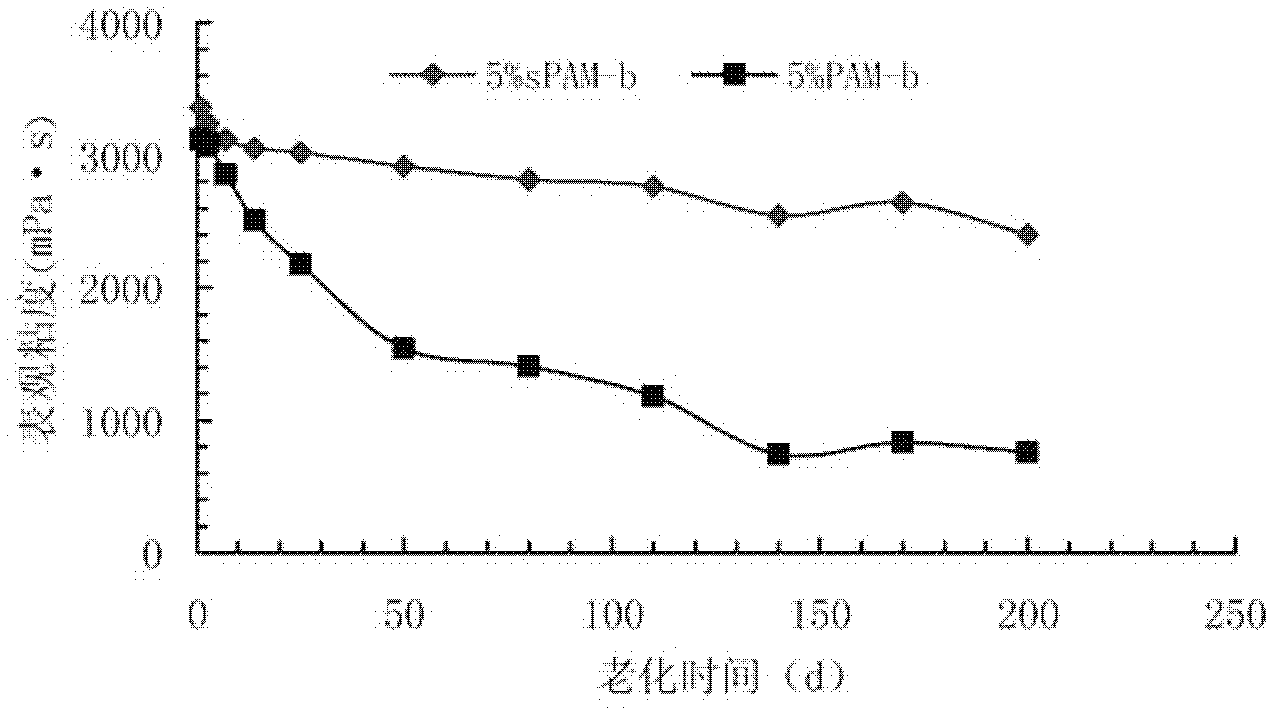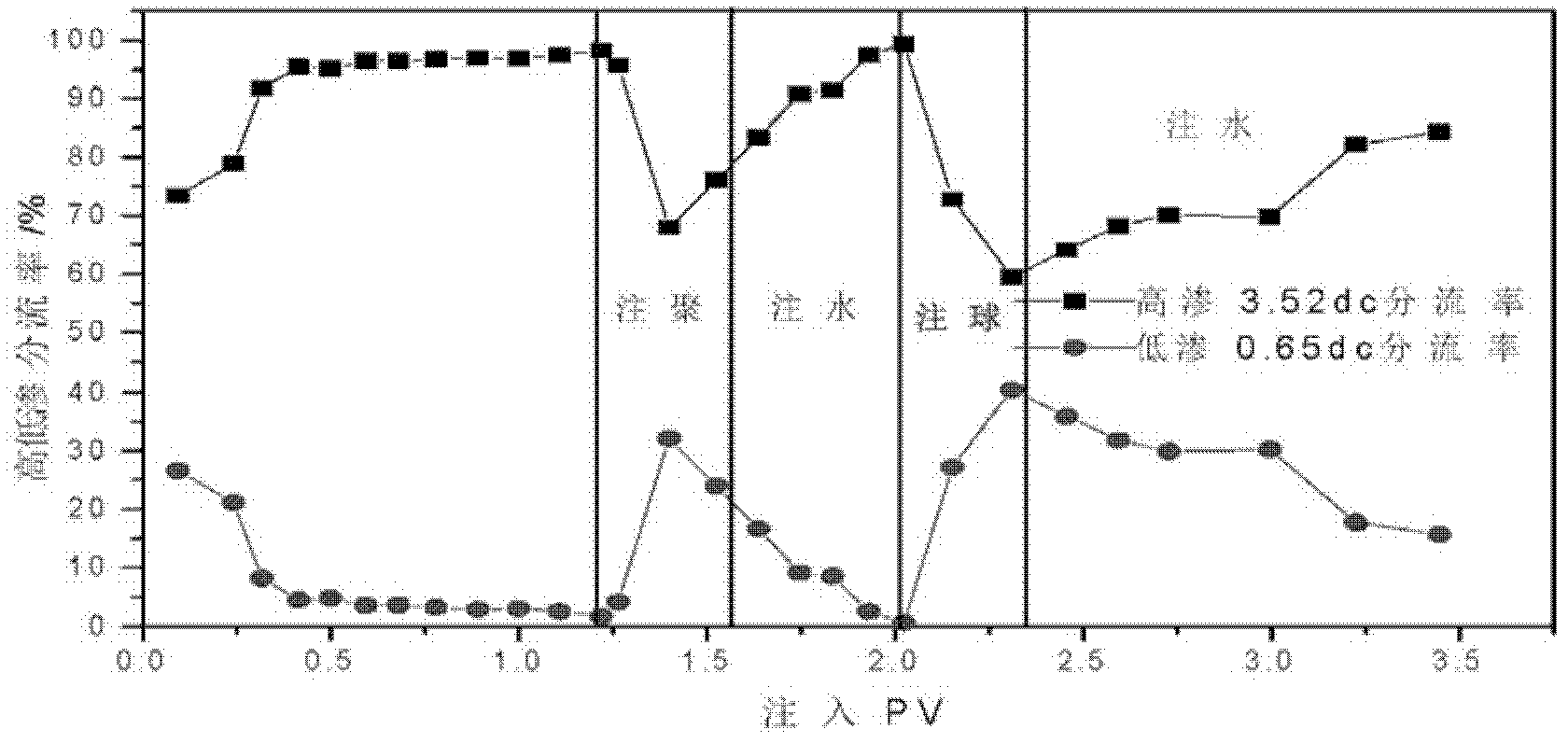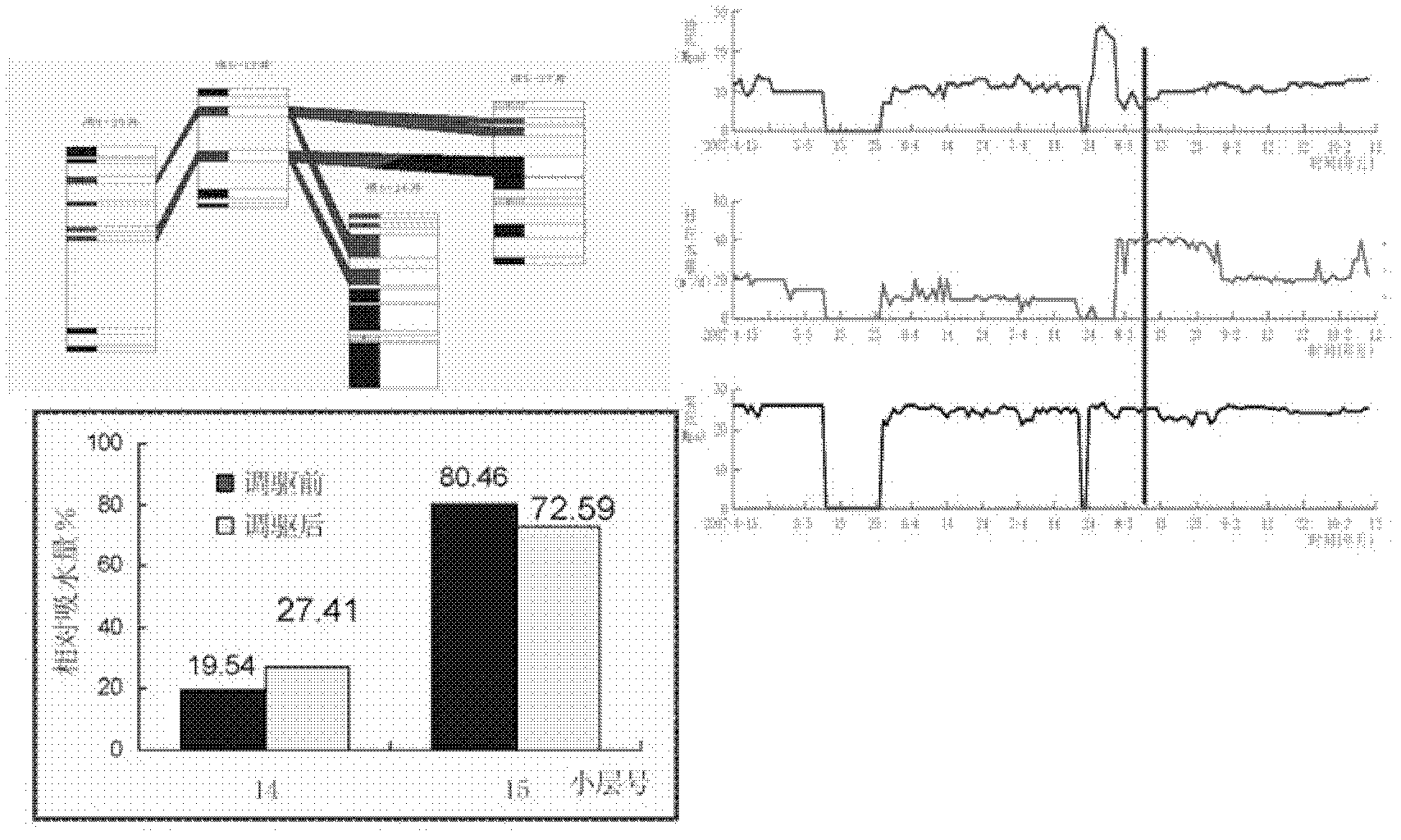Cross-linked polymer microsphere for oil displacement of oilfield and preparation method for cross-linked polymer microsphere
A technology of cross-linked polymers and microspheres, applied in drilling compositions, chemical instruments and methods, etc., can solve problems such as cost increase, achieve good injectability, improve recovery rate, and expand the swept volume of water flooding. Effect
- Summary
- Abstract
- Description
- Claims
- Application Information
AI Technical Summary
Problems solved by technology
Method used
Image
Examples
Embodiment 1
[0056] (1) Preparation of monomer solution: Dissolve acrylamide which accounts for 30% of the reaction system in deionized water which accounts for 32% of the reaction system. After stirring to dissolve it, add CH which accounts for 2.0% of the reaction system. 3 CH=CH-C(C 2 H 4 OC 2 H 5 ) 3 , Then add 0.5% of the reaction system of 2-acrylamido-2-methylpropanesulfonic acid (AMPS), after it is completely dissolved, fully stir until the solution is clear and free of solid insolubles, and adjust the solution to pH with 1% NaOH aqueous solution =7.0.
[0057] (2) Preparation of inverse emulsion system: Dissolve 5% of the surface active agent in the reaction system (Span-80: Tween-60, mass ratio 2:1) into 30% of the kerosene in the reaction system, and dissolve it fully. After homogenization, the monomer aqueous solution of step (1) is slowly added and fully stirred to obtain an opaque reverse emulsion polymerization reaction system.
[0058] (3) Thermal polymerization reaction: add 0....
Embodiment 2
[0060] (1) Preparation of monomer solution: Dissolve 25% of the acrylamide in the reaction system into deionized water that accounts for 25% of the reaction system, stir to dissolve it, and then add 5% of the reaction system CH 3 CH=CH-C(C 2 H 4 OCOCH 3 ) 3 , Then add 2% of the reaction system N,N'-methylenebisacrylamide, after completely dissolved, fully stir until the solution is clear and free of solid insolubles, adjust the solution to pH=7.0.
[0061] (2) Preparation of inverse emulsion system: Dissolve 1% of the surface active agent of the reaction system (Span-80: Tween-40 mass ratio 3:1) into the diesel oil that accounts for 40% of the reaction system, and wait to be fully dispersed and dissolved After homogenization, the monomer aqueous solution of step (1) is slowly added and fully stirred to obtain an opaque reverse emulsion polymerization reaction system.
[0062] (3) Thermal polymerization reaction: After dissolving 1% of the total mass of reaction monomers with azoisob...
Embodiment 3
[0064] (1) Preparation of monomer solution: Dissolve acrylamide which accounts for 28% of the reaction system in deionized water which accounts for 12.6% of the reaction system. After stirring to dissolve it, add CH which accounts for 0.1% of the reaction system. 3 CH=CH-C(C 2 H 4 OCOCH 3 ) 3 , Then add 4% of the reaction system N,N'-methylenebisacrylamide, after it is completely dissolved, fully stir until the solution is clear and free of solid insolubles, adjust the solution to pH=7.0.
[0065] (2) Preparation of inverse emulsion system: Dissolve 10% of the surfactant in the reaction system (Span-80: Tween-40 mass ratio 3:1) into the diesel oil that accounts for 45% of the reaction system, and dissolve it fully. After homogenization, the monomer aqueous solution of step (1) is slowly added and fully stirred to obtain an opaque inverse emulsion polymerization reaction system.
[0066] (3) Thermal polymerization reaction: After dissolving 0.1% of the total mass of reaction monomers...
PUM
| Property | Measurement | Unit |
|---|---|---|
| Particle size | aaaaa | aaaaa |
| Particle size | aaaaa | aaaaa |
| Particle size | aaaaa | aaaaa |
Abstract
Description
Claims
Application Information
 Login to View More
Login to View More - R&D
- Intellectual Property
- Life Sciences
- Materials
- Tech Scout
- Unparalleled Data Quality
- Higher Quality Content
- 60% Fewer Hallucinations
Browse by: Latest US Patents, China's latest patents, Technical Efficacy Thesaurus, Application Domain, Technology Topic, Popular Technical Reports.
© 2025 PatSnap. All rights reserved.Legal|Privacy policy|Modern Slavery Act Transparency Statement|Sitemap|About US| Contact US: help@patsnap.com



